Post by glactus on Feb 17, 2008 9:35:17 GMT
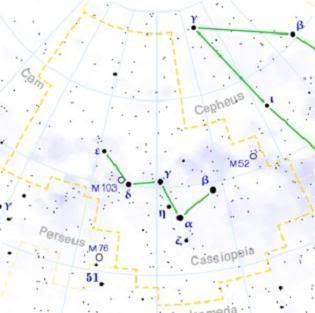
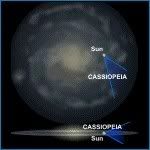
Cassiopeia - sun
Cassiopeia, or the Big Dipper, is a northern constellation located opposite of the celestial pole, and in Greek mythology was considered to represent a vain queen who boasted about her unrivaled beauty. It is a wonderful place to lose yourself on an Autumn night as it holds many objects of interest for all size instruments.
Notable stars:
The leading star, alpha Cas, also called Shedir (arab- the breast), is an irregular variable star which forms with an 9th mag blue neighbour, an optical double star. Distanc is 230 light years and magnitude 2.3
Gamma Cas, sometimes called Tsi, is an unstable blue sub giant that throws off shells of gas at unpredictable intervals. Distance is 610 light years and magnitude is 2.47.
Achird. This yellow binary is much closer to Earth, at roughly nineteen light years distance. Magnitude is 3.6
Rho Cas is a member of a rare breed of stars called hypergiants, This star is visible to the unaided eye despite its great distance of some 10,000 light-years, because it is over 500,000 times more luminous than our Sun. The magnitude is 4.54
Notable objects:
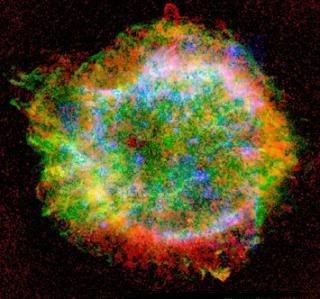
Cassiopeia A
Cassiopeia A (Cas A) is the youngest known supernova remnant in our galaxy. It exploded some 325 years ago and astronomers thought it was quietly fading away. But new results from NASA's Spitzer Space Telescope suggest that Cas A is not going gently into that good night. Instead the data indicate that as recently as 50 years ago the remnant sent a blast of energy rocketing through space that energized interstellar dust across 75 light-years. Distance is 11,000 light years and magnitude 6.3
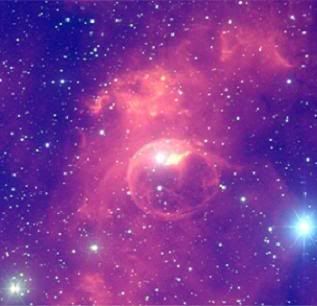
NGC 7635 the Bubble Nebula
NGC 7635, the Bubble Nebula, a nebula that is being shaped by a young hot star in its center. It is an expanding shell of glowing gas. The shell is being shaped by a very strong stellar wind of material and radiation which is emanating from the bright star forming shock waves. Distance from us is 11,300 light-years, and magnitude 8.3
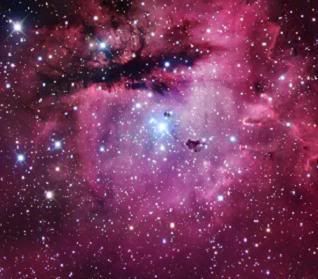
NGC 281
NGC 281 is part of the Perseus Spiral Arm. It includes or is near the open cluster IC 1590, the double star HD 5005, and several Bok globules. The shape of the nebula resembles the famous video game icon, Pac-Man. It is visible in amateur telescopes from dark sky locations. Distance from us is 9,500 light years and magnitude is at 7.4
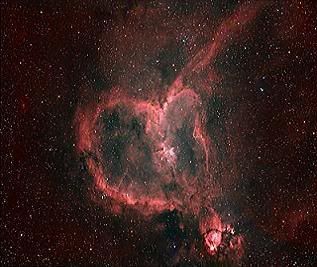
1805
Sprawling across hundreds of light-years, emission nebula IC 1805 is a mix of glowing interstellar gas and dark dust clouds. It is about 6,159 light-years away. This gorgeous, deep telescopic image of the nebula is very colorful, and shows a detailed view of light from sulfur atoms in red hues,
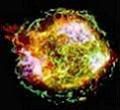
cassiopeia A
credits:
map: wikipedia
en.wikipedia.org/wiki/Cassiopeia_(constellation)
cassiopeia A
www.fas.org/irp/imint/docs/rst/Sect20/A6.html
NGC 281:
www.robgendlerastropics.com/NGC281NMMCrop.html
IC 1805: NASA
apod.nasa.gov/apod/ap040917.html
NGC 7635: lerma- lamap
www.u-cergy.fr/LERMA-LAMAP/galerie/OHP/


